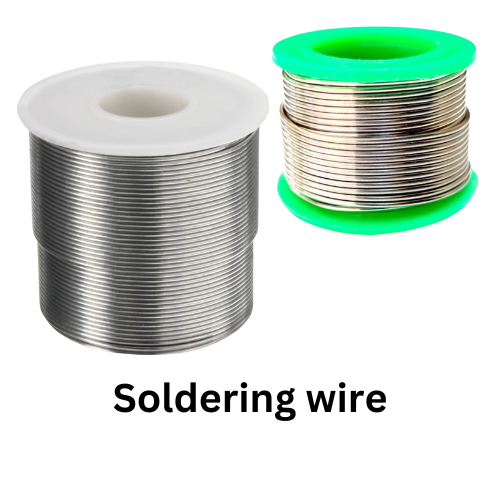Soldering wire is a fusible metal alloy used to join together metal workpieces (especially electronic components) by melting and flowing into the joint. It is an essential tool in electronics and electrical work for creating strong, conductive, and durable connections.
Key Points:
-
Composition:
Commonly made of a combination of tin (Sn) and lead (Pb), typically in a 60/40 ratio (60% tin, 40% lead). Lead-free versions (e.g., 99.3% tin, 0.7% copper) are now widely used for environmental and health reasons. -
Flux Core:
Most soldering wires have a rosin flux core in the center. Flux helps clean the metal surfaces and improves the flow of solder, ensuring a strong and clean joint. -
Melting Point:
Varies based on composition:-
Tin-Lead (60/40): ~183–190°C
-
Lead-Free: ~217–227°C
-
-
Diameter:
Available in various diameters (e.g., 0.5 mm to 1.5 mm). Thinner wires are preferred for precision electronics, while thicker ones are used for heavy-duty work. -
Applications:
-
PCB (Printed Circuit Board) soldering
-
Electrical wiring
-
Repairing or assembling electronic devices
-
Safety Tip:
Always work in a well-ventilated area when soldering, and avoid inhaling the fumes, especially from lead-based solder. Use personal protective equipment like safety glasses.


Reviews
Clear filtersThere are no reviews yet.